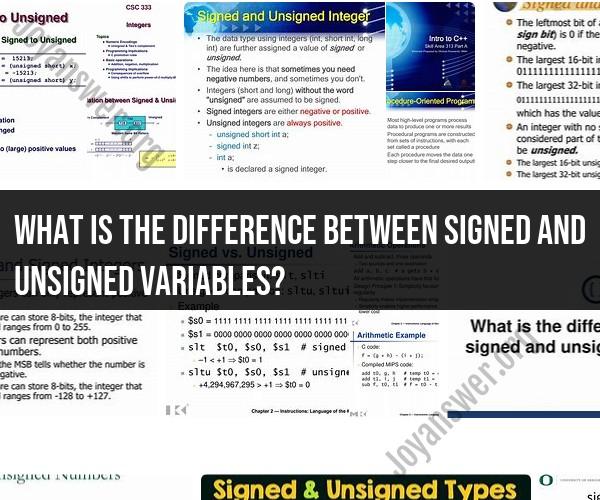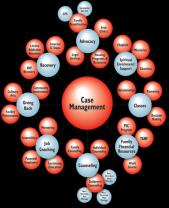What is the difference between signed and unsigned variables?
The main difference between signed and unsigned variables in programming lies in how they represent and interpret numerical data, particularly integers. Here are the key differences:
Representation of Numbers:
- Signed Variables: Signed variables can represent both positive and negative numbers. They allocate one bit for the sign (positive or negative) and the remaining bits for the magnitude (absolute value) of the number.
- Unsigned Variables: Unsigned variables, on the other hand, represent only non-negative (positive or zero) numbers. They do not allocate a bit for the sign; instead, all bits are used to represent the magnitude.
Range of Values:
- Signed Variables: The range of values that signed variables can represent is split between positive and negative values. For example, in a signed 8-bit integer, you might have a range of -128 to 127.
- Unsigned Variables: Unsigned variables can represent a broader range of non-negative values because they do not allocate any bits for negative numbers. In an 8-bit unsigned integer, you might have a range of 0 to 255.
Use Cases:
- Signed Variables: Signed variables are commonly used when you need to represent values that can be both positive and negative, such as temperatures, financial transactions, or coordinates in a Cartesian plane.
- Unsigned Variables: Unsigned variables are typically used when you need to represent values that are always non-negative, like counts, indices, or sizes of data structures.
Overflow and Underflow:
- Signed Variables: Signed variables can experience overflow and underflow when the represented value exceeds the valid range for the data type. Overflow occurs when a positive value becomes too large to be represented, while underflow occurs when a negative value becomes too small.
- Unsigned Variables: Unsigned variables can experience overflow, but they do not have underflow because they represent only non-negative values. Overflow happens when the represented value exceeds the valid range for the data type, causing it to wrap around to a lower value.
Arithmetic Operations:
- Signed Variables: Arithmetic operations with signed variables must consider both positive and negative values and apply rules for sign extension and two's complement representation (for binary systems).
- Unsigned Variables: Arithmetic operations with unsigned variables are straightforward because they only deal with non-negative values. There's no need to handle sign-related complexities.
In summary, the key difference between signed and unsigned variables is how they represent and interpret numerical data. Signed variables can represent positive and negative values, while unsigned variables are limited to non-negative values. The choice between signed and unsigned variables depends on the specific requirements of your programming task and the range of values you need to work with.












